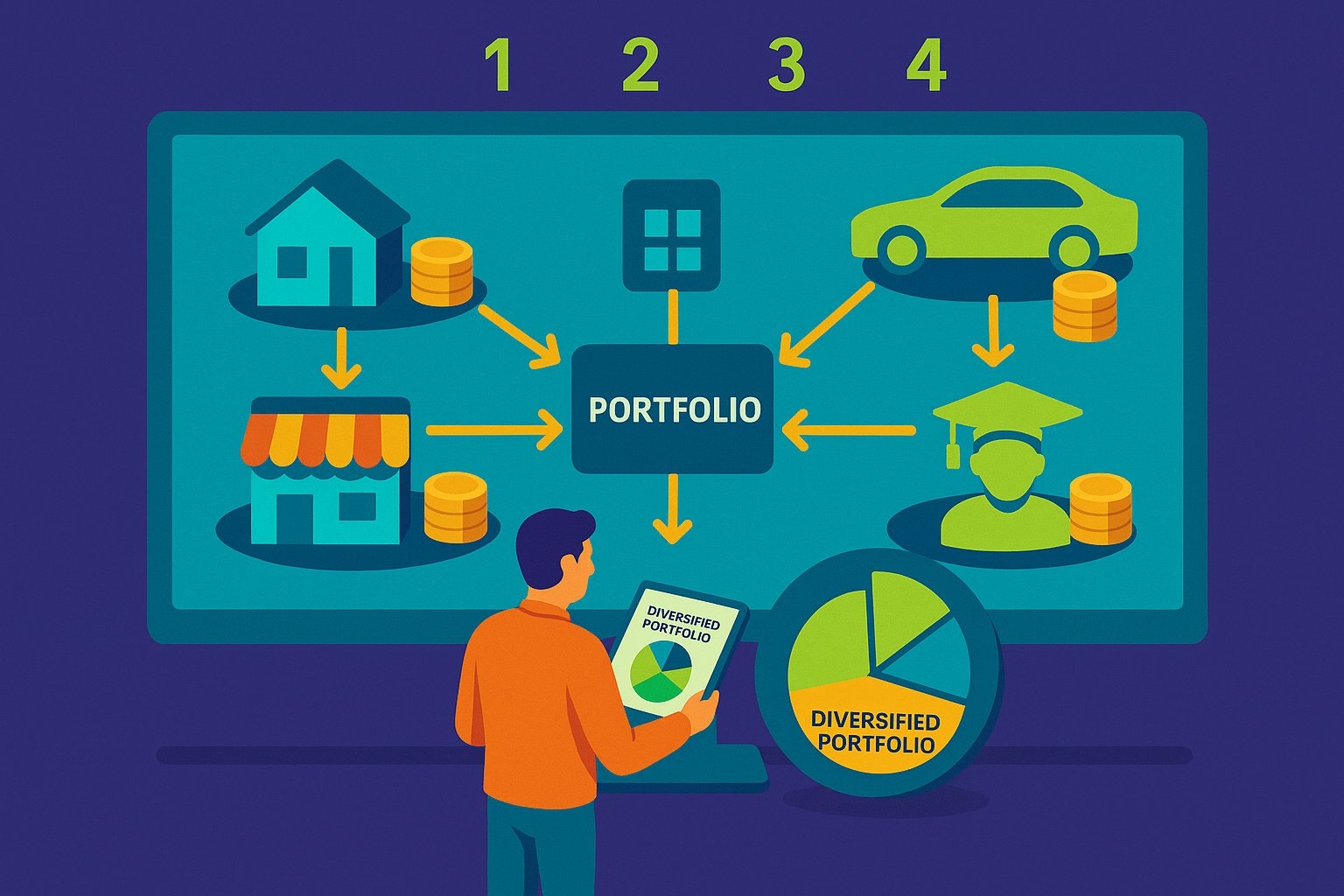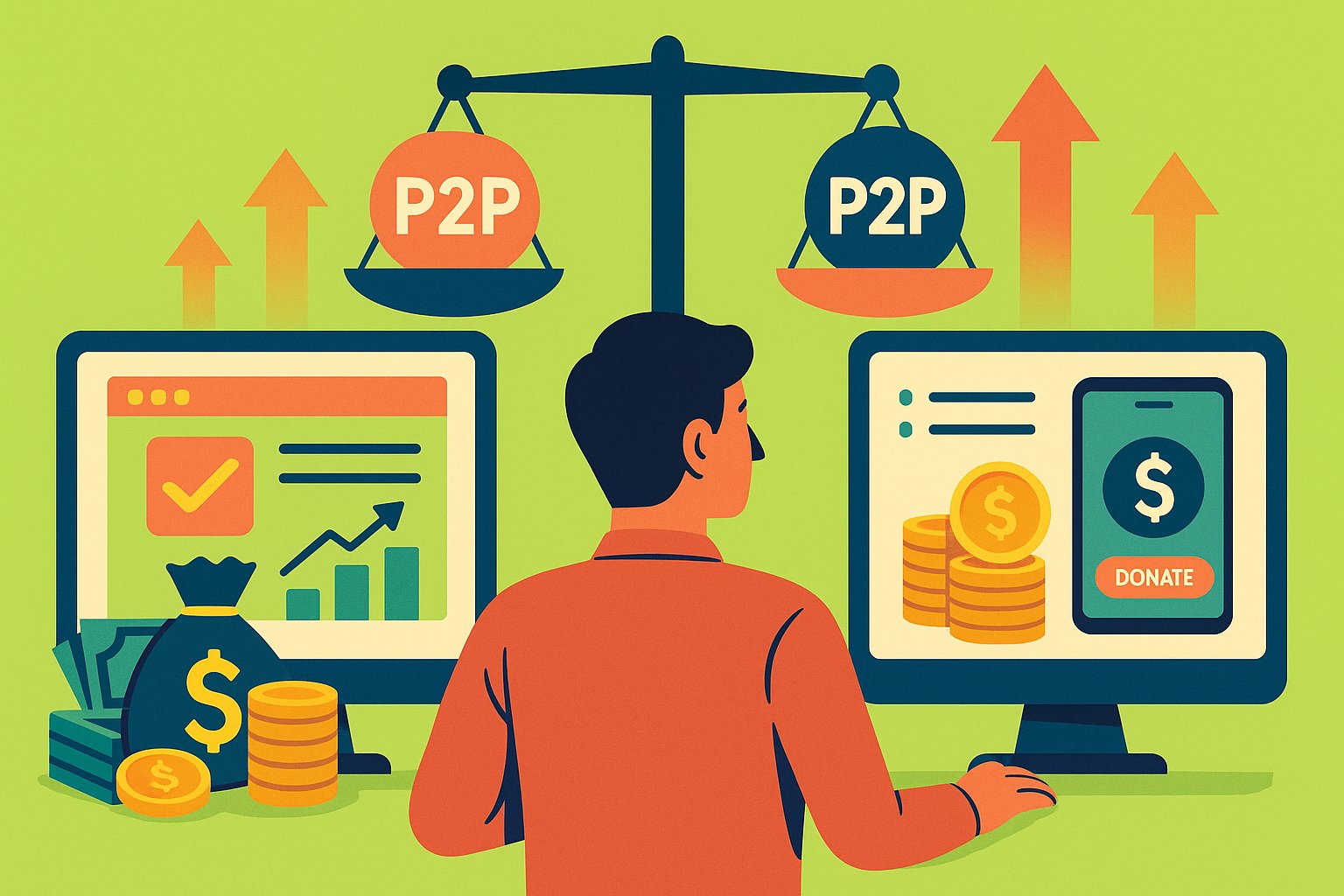Blueprint for a Robust Debt Crowdfunding Portfolio
Building a diversified debt crowdfunding portfolio can feel like constructing a financial mosaic piece by piece. By lending directly to borrowers through online platforms, investors gain access to attractive interest rates and steady cash flow—if the portfolio is structured with care. Yet the pathway to sustainable income requires far more than cherry-picking a handful of loans. It demands thoughtful planning, nuanced risk assessment, and ongoing portfolio management. In this step-by-step guide, you’ll learn how to lay a solid foundation, evaluate platforms critically, allocate funds across varied loan types, and refine your approach as market conditions evolve. Whether you’re new to debt crowdfunding or seeking to optimize an existing portfolio, this roadmap provides actionable insights that blend creativity, professional rigor, and practical excitement. By following these steps, you’ll be well on your way to crafting a resilient portfolio that harnesses the potential of debt crowdfunding while buffering against potential pitfalls.
Surveying the Debt Crowdfunding Landscape
Before any capital is committed, it’s essential to develop a deep understanding of how debt crowdfunding platforms operate. Unlike traditional banking channels, these online marketplaces connect individual investors directly with borrowers seeking business loans, consumer loans, or real estate financing. Each platform implements its own credit assessment model, borrower verification process, and fee structure, which can significantly influence portfolio performance. Some platforms may focus heavily on small business lending with thorough income documentation, while others cater to real estate developers using property as collateral. By researching platform reputations, historical default rates, and user reviews, you can gauge which marketplaces align with your broader investment objectives. This preliminary reconnaissance also illuminates the spectrum of loan grades available—ranging from prime borrowers with minimal default risk to higher-yield, subprime borrowers with elevated risk. Taking the time to map out the variety of loan products and platform nuances lays the groundwork for informed diversification decisions.
Clarifying Your Financial Objectives and Risk Appetite
Every robust portfolio begins with a clear articulation of financial goals. Are you primarily seeking consistent monthly cash flow to cover living expenses, or is your strategy focused on medium- to long-term capital appreciation through compounding interest? Understanding your time horizon—whether you need liquidity within six months or can comfortably lock in funds for several years—will influence the selection of loan maturities and credit profiles. Equally important is gauging your appetite for risk. If you prioritize capital preservation, a portfolio weighted toward lower-interest loans with high credit grades may be more appropriate, even though yields will be modest. Conversely, a more aggressive investor might allocate a portion of capital to higher-yield, below-prime-grade loans, accepting that some defaults are inevitable. By balancing these objectives and tolerances on paper before sourcing loans, you create guardrails that guide subsequent allocation decisions and mitigate emotional knee-jerk reactions when the market fluctuates.
Vetting Lending Platforms with a Critical Eye
With objectives and risk tolerance defined, the next step is to conduct a thorough evaluation of prospective debt crowdfunding platforms. Key considerations include transparency in underwriting standards, historical performance data, and fee structures. Ideally, you want to partner with platforms that publish detailed statistics—such as default rates by loan grade, average recovery percentages after borrower defaults, and borrower demographic breakdowns. Some platforms implement reserve or provision funds designed to soften the blow of elevated defaults, while others may offer buyback guarantees contingent on delayed borrower payments. It’s also worthwhile to explore user reviews on independent forums to gauge the real-life experiences of fellow investors: Were platform customer support teams responsive to inquiries? Have there been severe downturns where default rates spiked unexpectedly? Additionally, assess each platform’s fee schedules—origination fees paid by borrowers, servicing fees deducted from interest payments, and potential withdrawal fees. By cross-referencing these criteria across multiple platforms, you can short-list those that align with your strategic goals and comfort level.
Strategizing Loan Allocation across Asset Classes
Once you’ve zeroed in on one or more reputable platforms, it’s time to carve out an allocation strategy. A prudent approach involves dividing capital across distinct asset classes—consumer, small business, and real estate loans—each with its own risk-return profile. Consumer loans, often used for debt consolidation or medical expenses, can offer mid-range interest rates (typically 8–14% APR) and are unsecured, meaning recoveries after default may be limited. Small business loans can carry slightly higher yields (10–18%), but they rely on the borrower’s cash flow and business plan viability; some platforms require revenue verification and financial statements. Real estate loans, secured by property collateral, can yield between 6–12% APR, depending on loan-to-value ratios and local market conditions. By allocating, for example, 40% to consumer loans, 40% to small business loans, and 20% to real estate, you begin to balance potential yield with varying forms of collateral or borrower quality. This diversified allocation helps cushion the portfolio when one sector underperforms, ensuring that poor performance in a single category does not derail overall returns.
Emphasizing Geographic and Sectoral Spread
Beyond dividing loans by asset class, incorporating geographic and sectoral diversification further fortifies your portfolio. Regional economic cycles, industry trends, and local real estate valuations all influence borrower performance. If your entire real estate exposure is concentrated in a single metropolitan area—where market prices are susceptible to local regulatory changes or oversupply—you expose yourself to heightened volatility. To counter this, deliberately select real estate loans across multiple regions: perhaps a fix-and-flip project in the Southeast, a ground-up construction loan in the Midwest, and a small commercial property in the Pacific Northwest. Similarly, when allocating to small business loans, ensure you’re not funding only restaurants or retail stores in a single city. Instead, target businesses in diverse sectors—such as healthcare services in urban centers, agricultural enterprises in rural zones, and tech startups in established innovation hubs. By interweaving loans from various locales and industries, you reduce the likelihood of systemic downturns in any one community or vertical drastically impacting your portfolio.
Balancing Loan Terms and Maturities for Cash Flow Management
A well-balanced debt crowdfunding portfolio also incorporates loans with staggered maturities. Ideally, you will have a portion of loans maturing in the near term—six to twelve months—while another tranche extends into multi-year durations. Shorter-term loans offer faster principal repayment, enabling reinvestment or liquidity if unexpected financial needs arise. Meanwhile, longer-term loans, often found in real estate and certain small business categories, can deliver more attractive yields that enhance total portfolio returns. When crafting your allocation, consider slicing capital into short-term, medium-term, and long-term segments—perhaps 30% in six- to twelve-month loans, 40% in twelve- to twenty-four-month loans, and 30% in twenty-four-month-plus loans. This laddered maturity structure smooths cash flow: as shorter-term loans conclude, interest and principal can be redeployed into new opportunities, even as legacy loans continue generating income. Such thoughtful maturity staggering ensures you’re not forced to sell loans on secondary markets at unfavorable prices or leave large sums idle during market dips.
Leveraging Automated Reinvestment for Continuous Growth
To harness the power of compound returns, take full advantage of the automated reinvestment features offered by most debt crowdfunding platforms. Auto-invest settings allow you to specify criteria—such as minimum interest rate, loan grade, term length, and asset class preferences—so that as principal and interest payments arrive, the system directs funds into newly listed loans aligning with your parameters. This removes the friction of manually assessing and funding each loan, which becomes particularly unwieldy as your portfolio scales. However, automation is not a “set it and forget it” solution; periodic reviews are still essential. Market conditions evolve: rising interest rates may expand the spread on new loan listings, making higher-yield loans more plentiful, while deteriorating economic indicators might signal a need to shift toward more conservative credit grades. By revisiting your auto-invest filters every quarter or semi-annually, you ensure your reinvestment strategy remains optimally tuned to the current lending environment, allowing compounded returns to propel your portfolio’s growth trajectory without constant manual intervention.
Monitoring Performance and Proactive Rebalancing
Even with automated tools in place, vigilant monitoring is the hallmark of a resilient debt crowdfunding portfolio. Regular performance reviews—ideally monthly—offer insights into loan delinquency rates, recoveries from charged-off accounts, and deviations from projected cash flows. At the platform level, track aggregate default trends by credit grade and asset class to identify emerging patterns. Are consumer loans experiencing an uptick in 30-to-60-day delinquencies? Are real estate loans in certain regions showing signs of appraisal volatility? By correlating macroeconomic indicators—such as unemployment data or housing price indices—with your portfolio’s performance, you gain foresight into potential stress points. If a specific segment consistently underperforms, consider throttling new allocations to that category or raising minimum credit-grade thresholds. Periodic rebalancing ensures that your portfolio’s risk profile remains aligned with your original objectives, preventing drift toward over-concentration in high-risk, high-yield loans that could destabilize returns over time.
Navigating Tax Implications and Reporting Requirements
Interest income from debt crowdfunding typically counts as ordinary taxable income in the year it is received. Some platforms issue IRS Form 1099-INT or similar statements, simplifying the process of reporting taxable interest on your annual return. However, if you fund loans through an IRA or retirement account, different rules may apply—particularly around unrelated business taxable income (UBTI) if you invest in certain types of private placements. It is crucial to maintain detailed records of all payments received, loan principal recovered, and any losses attributed to charged-off loans. In the event of a borrower default, you may be able to deduct the unrecoverable principal as a bad debt, subject to IRS regulations. The process for claiming these deductions often requires documentation such as notices of nonpayment and efforts to recover debt. Consulting with a tax professional who has experience in marketplace lending is highly recommended to ensure you optimize net returns after accounting for tax liabilities and avoid inadvertent reporting errors.
Cultivating a Forward-Looking Mindset for Long-Term Success
Constructing and managing a diversified debt crowdfunding portfolio is not a one-off endeavor; rather, it is an ongoing journey that benefits from curiosity, adaptability, and strategic foresight. Stay attuned to evolving industry trends—such as changes in platform underwriting practices, emerging regulatory developments in financial services, or breakthroughs in alternative credit scoring technologies. Engage with peer communities through forums, industry webinars, or local investor meetups to exchange insights and glean lessons from more experienced lenders. Experiment with small capital allocations in new platforms or loan categories to test their performance before committing larger sums. Periodically revisit your financial objectives: as life circumstances change—whether you require more liquidity, shift your risk tolerance, or recalibrate your income needs—update your allocation strategy accordingly. By maintaining a growth-oriented mindset that blends disciplined analysis with opportunistic exploration, you ensure that your debt crowdfunding portfolio remains agile, resilient, and capable of sustaining meaningful passive income over the long haul.
Embarking on Your Diversified Lending Adventure
Armed with a clear blueprint, you are now prepared to build a diversified debt crowdfunding portfolio that balances yield, risk, and liquidity. By surveying the lending landscape, defining personal objectives, rigorously vetting platforms, and allocating capital across asset classes, geographic regions, and loan maturities, you mitigate the impact of borrower defaults and economic shifts. Leveraging automated reinvestment, proactively monitoring performance, and appreciating the tax ramifications of your earnings further reinforce your portfolio’s health. While the concept of lending directly to borrowers through online platforms may appear novel or intimidating at first glance, the potential for steady, compounding returns makes it a compelling addition to any investor’s playbook. Remember: success in debt crowdfunding stems from a methodical approach, ongoing learning, and a willingness to adapt as the marketplace—and your own financial goals—evolve. By following these steps and staying committed to disciplined portfolio management, you unlock a pathway to meaningful passive income and support the dynamic ecosystem of entrepreneur-driven and community-focused borrowers that debt crowdfunding platforms empower.




